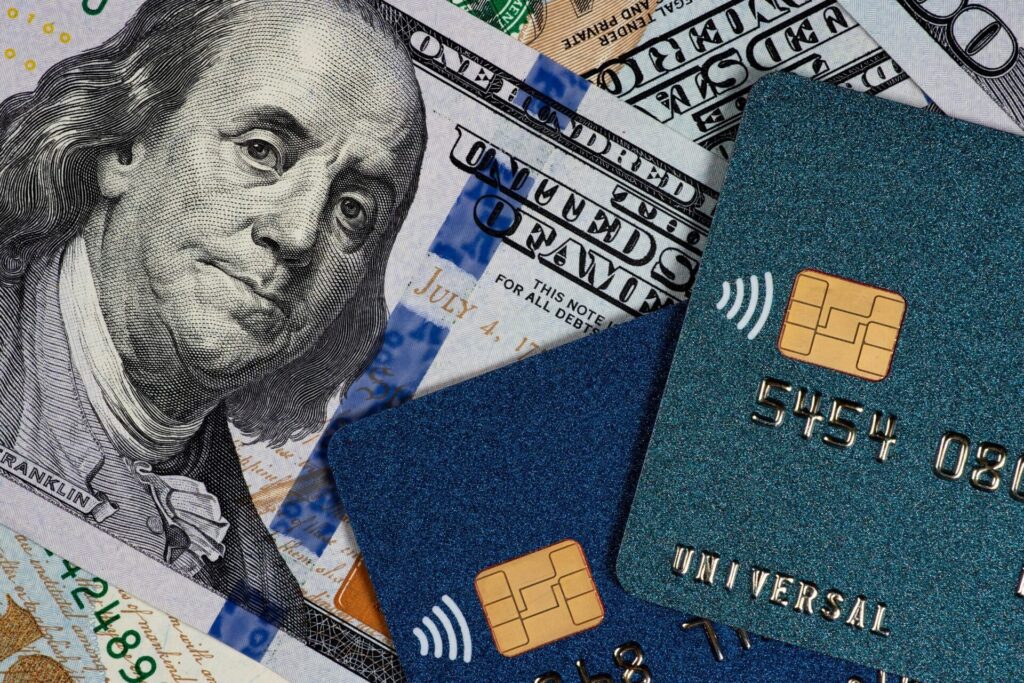Credit cards… are really useful, right? They keep us from having to carry cash, and they help us to pay for things that we may not have the money for right now. Except, that last part can get us into trouble. Credit cards—like an enabling, bad influence friend—make it possible to spend more than we have. And the average credit card debt just keeps increasing.
Sometimes we pay that big credit card balance off quickly, and it’s no big deal. Other times, we keep charging on that card, and the balance (along with the interest we pay) keeps increasing. That can get us into deep debt very quickly. How does your spending compare to other people’s?
Average credit card debt
The average American’s credit card balance is around $7,800*, and it increases every year. This average varies a lot across different demographics, income levels, and regions, of course, but carrying a balance is fairly common for many groups.
What influences credit card debt?
Several factors cause the variation in credit card debt across the population:
1. Income levels
Generally, individuals with higher incomes may have larger credit card debt, as they have more disposable income to spend and potentially more credit available to them.
2. Cost of living
People who live in areas with higher costs of living often use credit cards more to cover expenses, so they carry more debt.
3. Consumer behavior
Spending habits have a big impact on credit card debt. People who budget and manage their finances responsibly tend to—as you’d expect—have lower debt levels.
4. Economic conditions
Economic ups and downs can impact people’s ability to keep up with their debt. During economic downturns, job losses and reduced income may lead to higher debt accumulation.
Impact of credit card debt
Credit cards offer convenience and sometimes tempting rewards, but carrying high levels of debt has several negative consequences (and ends up costing way more than any rewards or perks are worth).
1. Interest payments
High credit card balances mean higher interest payments. The compounding effect of interest can make it really hard to pay off the principal debt once it gets out of hand.
2. Credit score
High credit card debt relative to your credit limit (e.g. high debt-to-income ratio) can negatively impact your credit score. This, in turn, limits your ability to get favorable loan terms or interest rates in the future.
3. Financial stress
Carrying big debt can lead to financial stress and anxiety, impacting your overall well-being.
4. Limited savings
Chasing credit card debt means tying up money that could otherwise be going into savings or investments to accrue more money.
Managing Debt
If you find yourself wrestling with overwhelming debt, there are a few strategies to help you regain control of your finances. Here are some ideas.
1. Create a budget
Establish a realistic budget that outlines your income, expenses, and debt repayment goals.
2. Pay more than the minimum
Whenever possible, pay more than the minimum required payment to reduce your debt faster.
3. Prioritize high-interest debt
Focus on paying off credit cards with the highest interest rates first to minimize interest charges.
4. Debt consolidation
Consider consolidating high-interest debt with a lower-interest personal loan.
5. Negotiate with creditors
If you’re struggling, contact your creditors to talk about options like negotiating lower interest rates or setting up a repayment plan.
6. Seek professional help
If your debt becomes unmanageable, consider seeking guidance from a certified credit counselor or financial advisor.
The bottom line: average credit card debt
The average U.S. debt is a reminder of the importance of using credit responsibly. While credit cards can be valuable tools, it’s important to avoid falling into the trap of high-interest debt. By understanding your financial situation, creating a budget, and adopting smart spending habits, you can keep your credit card usage under control and build a healthier financial future.
*Credit card debt calculated using the average of the past five years Experian data on the percentage of credit card debt considered revolving (carried month to month) as opposed to transacting (paid in full each month).










